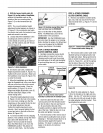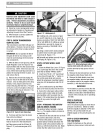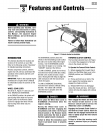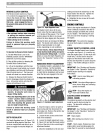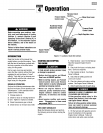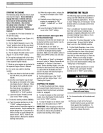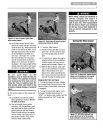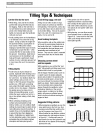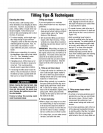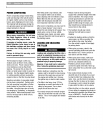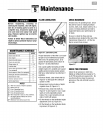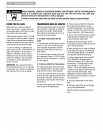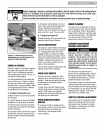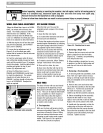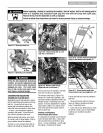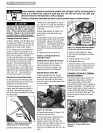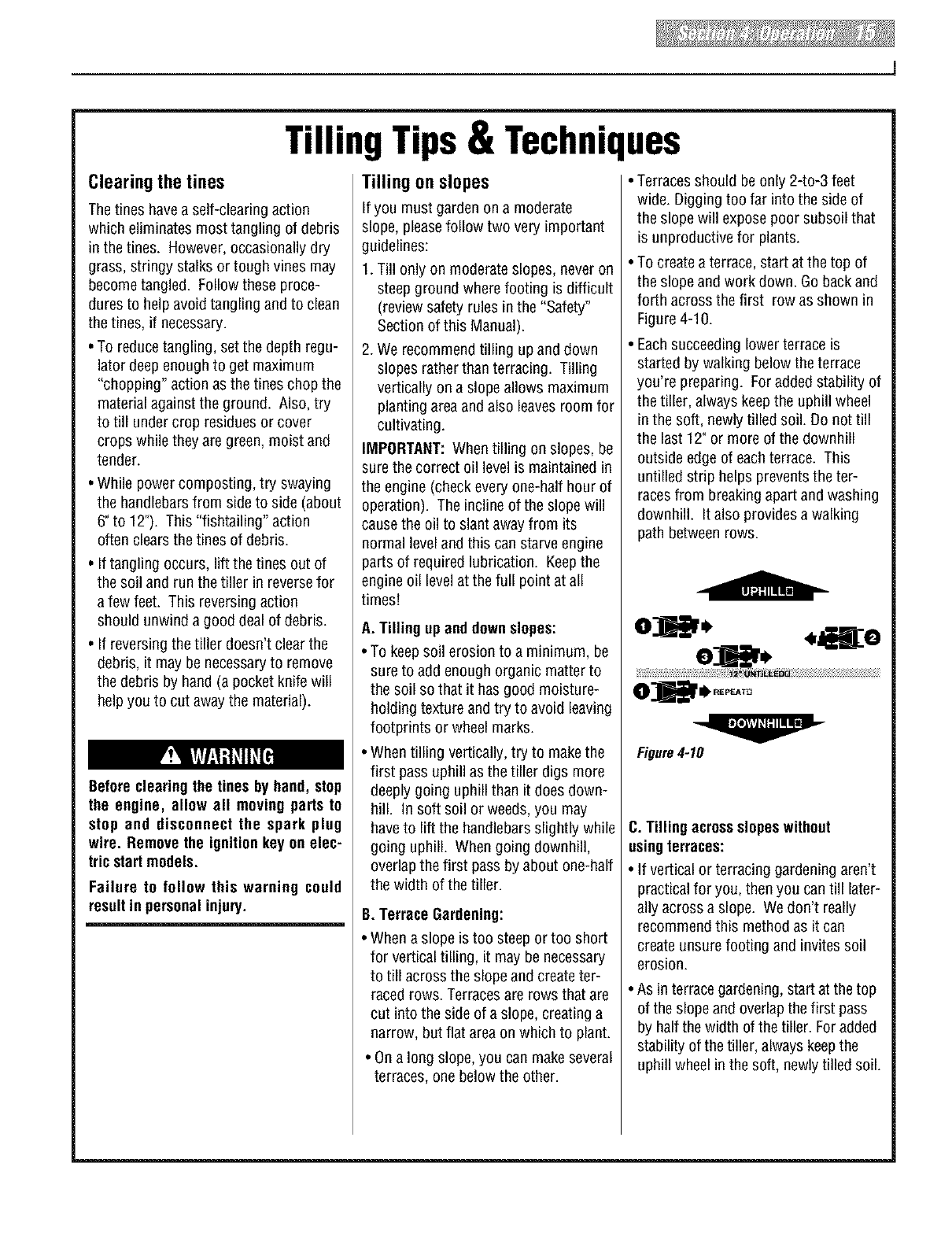
TillingTips& Techniques
Clearingthetines
Thetines have a self-clearingaction
which eliminatesmost tangling of debris
in the tines. However,occasionally dry
grass, stringy stalks or tough vines may
becometangled. Follow these proce-
duresto help avoidtangling and to clean
thetines, if necessary.
• To reducetangling, set the depth regu-
lator deepenough to get maximum
"chopping" action asthe tines chop the
materialagainst the ground. Also, try
to till under crop residues or cover
crops while they are green, moist and
tender.
• While powercomposting, try swaying
the handlebarsfrom sideto side (about
6" to 12"). This "fishtailing" action
often clears thetines of debris.
• If tangling occurs, lift the tines out of
the soil and run the tiller in reversefor
a few feet. This reversing action
should unwind a good deal of debris.
• If reversing thetiller doesn't clear the
debris, it may be necessaryto remove
the debris byhand (a pocket knife will
help youto cut away the material).
Beforeclearingthe tines byhand, stop
the engine, allow all moving parts to
stop and disconnect the spark plug
wire. Removethe ignitionkeyon elec-
tric start models.
Failure to follow this warning could
resultin personalinjury.
Tillingon slopes
If you must garden on a moderate
slope, pleasefollow two very important
guidelines:
1.Till only on moderate slopes, neveron
steepground wherefooting is difficult
(review safety rules in the "Safety"
Sectionof this Manual).
2.We recommendtilling up and down
slopes ratherthan terracing. Tilling
vertically on a slope allows maximum
plantingarea andalso leavesroom for
cultivating.
IMPORTANT:Whentilling on slopes, be
surethe correct oil levelis maintainedin
the engine (checkevery one-half hour of
operation). The inclineof the slopewill
causethe oil to slant awayfrom its
normal leveland this canstarveengine
parts of required lubrication. Keepthe
engine oil levelat thefull point atall
times!
A. Tilling upanddownslopes:
• To keepsoil erosion to a minimum, be
sure to add enough organic matter to
the soil so that it has good moisture-
holding texture andtry to avoid leaving
footprints or wheel marks.
• Whentilling vertically,try to makethe
first pass uphill asthe tiller digs more
deeplygoing uphill than it does down-
hill. In soft soil or weeds,you may
haveto lift the handlebarsslightly while
going uphill. Whengoing downhill,
overlapthe first pass by about one-half
the width of the tiller.
B.Terrace Gardening:
• Whena slope is too steepor too short
for verticaltilling, it may be necessary
to till across theslope and createter-
racedrows. Terracesare rows that are
cut into the side of a slope, creating a
narrow, but flat areaon which to plant.
• Ona long slope, you can makeseveral
terraces, onebelow the other.
• Terracesshould be only 2-to-3 feet
wide. Digging too far into the sideof
the slope will exposepoor subsoil that
is unproductive for plants.
• To createa terrace, startat the top of
the slope and work down. Goback and
forth acrossthe first row as shown in
Figure4-10.
• Eachsucceedinglower terrace is
startedby walking belowthe terrace
you're preparing. Foraddedstability of
the tiller, always keepthe uphill wheel
in the soft, newly tilled soil. Donot till
the last 12"or more of the downhill
outside edgeof eachterrace. This
untilled strip helps preventsthe ter-
racesfrom breakingapartand washing
downhill. It also provides a walking
path betweenrows.
ol ',
Figure4-10
C. Tilling acrossslopeswithout
usingterraces:
• If vertical or terracing gardeningaren't
practicalfor you, then you cantill later-
ally across a slope. We don't really
recommendthis method asit can
createunsurefooting and invites soil
erosion.
• As in terrace gardening,startat thetop
of theslopeand overlap thefirst pass
by halfthewidth of the tiller. Foradded
stability of thetiller, always keepthe
uphill wheelin the soft, newly tilled soil.



